In 2014 I took a trip out west with the aim of climbing three significant mountains: Hood, Rainier, and Shuksan. The trip was a success and two of those peaks — Hood and Rainier — were climbed again less than a year later. We climbed in July last year, but in June this year. Changes were noted as a result of this and other factors. Some of the changes were significant. And that is the inspiration for this article.
Mt Hood showed more snow at elevation due to the earlier climb. That was to be expected, optimistically. At the base, however, the difference over last year was profound. Last year we started in snow almost at Timberline Lodge, in July, and this year we hiked about two miles of crumbly, dusty lava and rock before reaching snow, in June! Even as high up as Hog’s Back, a snow ridge separating two fumaroles, we noted changes: the fumaroles’ exposed regions were more than double that of last year.
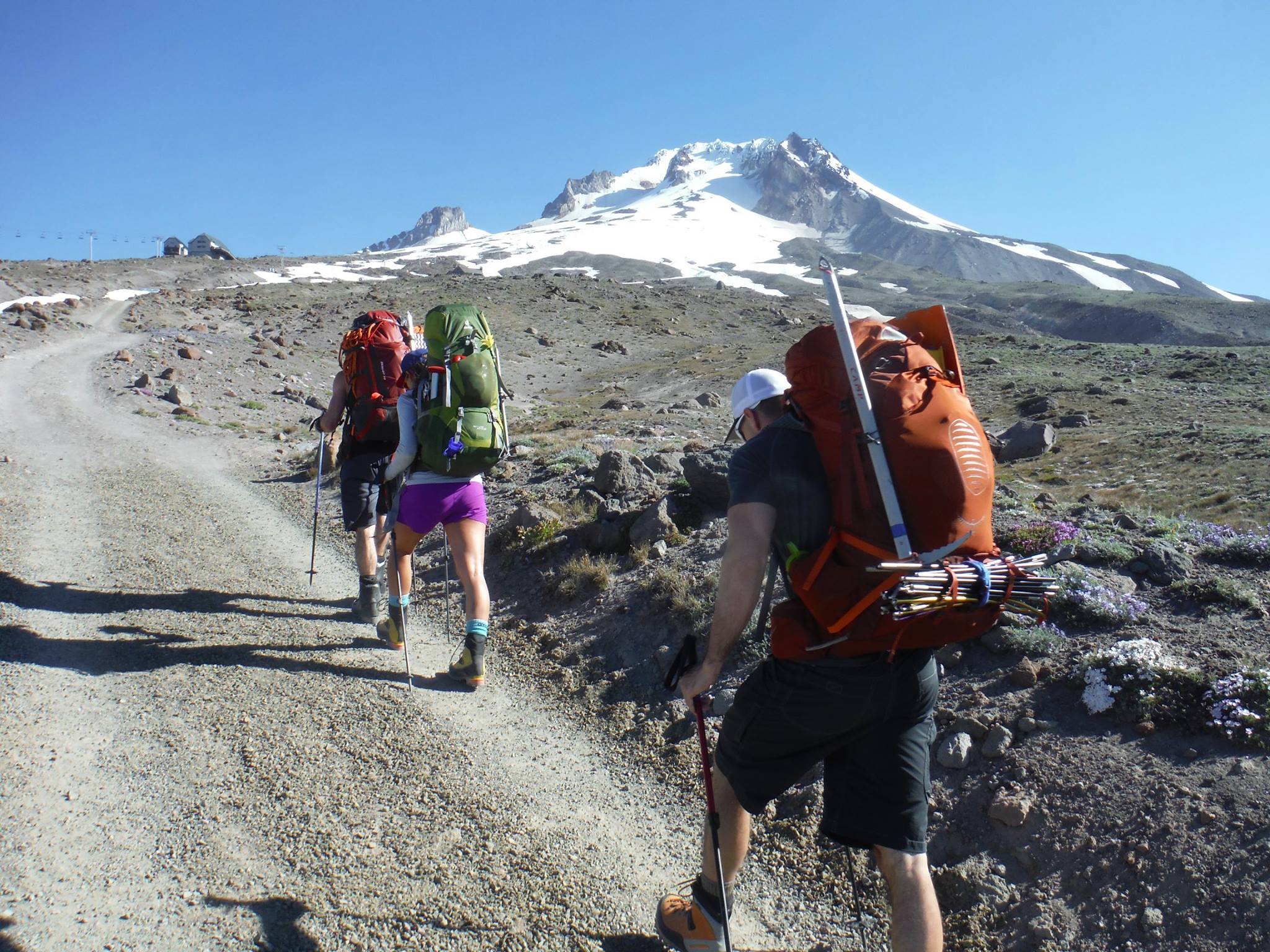
Mt Hood’s approach made evident the lack of winter snows.
While the changes on the 11,249′ Mt Hood were notable, especially at lower elevations, the changes on 14,410′ behemoth that is Mt Rainier, were remarkable, but mostly for different reasons. We did notice having to climb maybe a half mile further to reach patchy snow, but the John Muir Snow Field pretty much terminated at Pebble Creek, just as it did in 2014. There was probably less snow in terms of depth, but we hardly noticed. And we really didn’t notice much difference as we climbed higher. This was true until day three: summit day.
We ascended by a route called Disappointment Cleaver. It is a rocky ridge that rises over and between Ingraham and Emmons Glaciers. It, too, was very similar to last year, but above that, where last year we climbed a significant amount before shifting our direction of travel to the left around a massive bergshrund, this year we followed the established boot track route hard to the left immediately. And that was just the beginning to the changes we would see. A dry winter allowed the chaos beneath to be exposed.
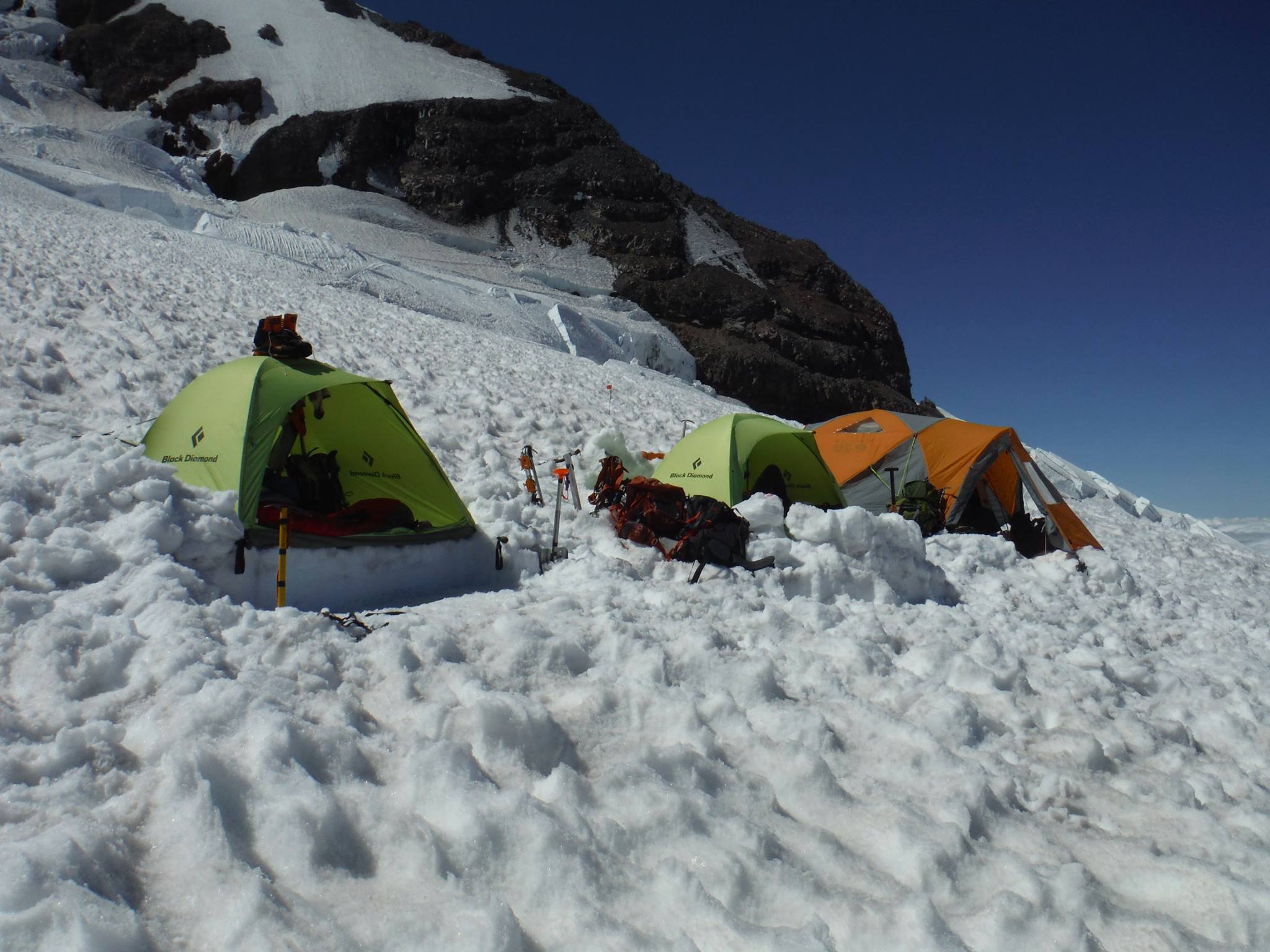
The crumbing lava ridge that is Disappointment Cleaver, as seen from Ingraham Flats.
Mt Rainier is a crumbling pile of lava partially held together with massive glaciers. Glaciers are created by the presence of perpetual snow. This year’s snow adds to what’s left of last year’s snow, compressing it into ice at deeper levels as the process repeats. These glaciers are, as noted, massive. A mile across, several miles long. And they move; flowing like rivers of snow and ice.
Snow and ice rivers, like their liquid forms, flow over the underlying terrain and it is not a steady plane. It undulates creating convexed sections, even falls, as well as concavities. The latter compresses the snow, flattening it or even forming it into a tight bowl. The former, on the other hand, tries to expand the surface of the glacier. You can’t stretch snow so crevasses form (for this and other reasons in other locations). These can be huge. Several, even tens of meters across and possibly up to a hundred meters deep. Some could swallow a small building with a few cars thrown in.
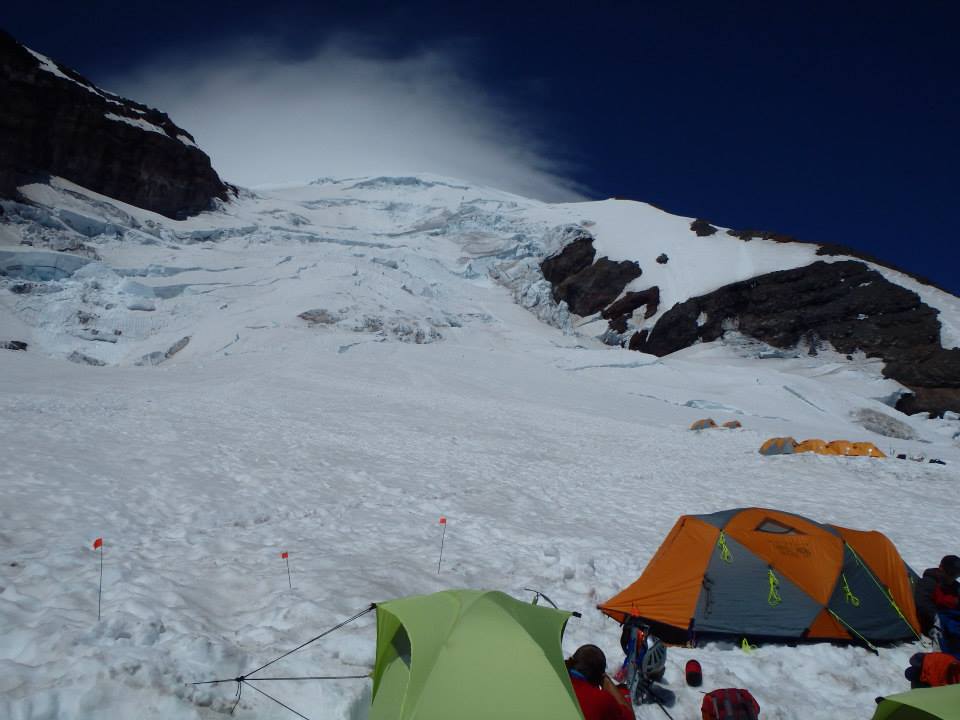
The huge, constantly moving ice fall looming over Mt Rainier’s Ingraham Glacier’s “Flats.”
“Flowing like a river.” Constant motion. The forces slowly build as gravity works its magic, then there is release. And it can be as incredible as it is dangerous. On summit day, 2014, we set our alarms for 11:30 PM but we were all awoken from our safely located high camp slumber at 11:20 as a nearby serac (think ice boulder of limitless size) tore free of its parent glacial wall and tumbled with a glacier-jarring thud into the crevasse it was formally perched over. I saw a plume of snow particles like a small mushroom cloud over the mouth of the crevasse by the time I was able to peek outside my tent.
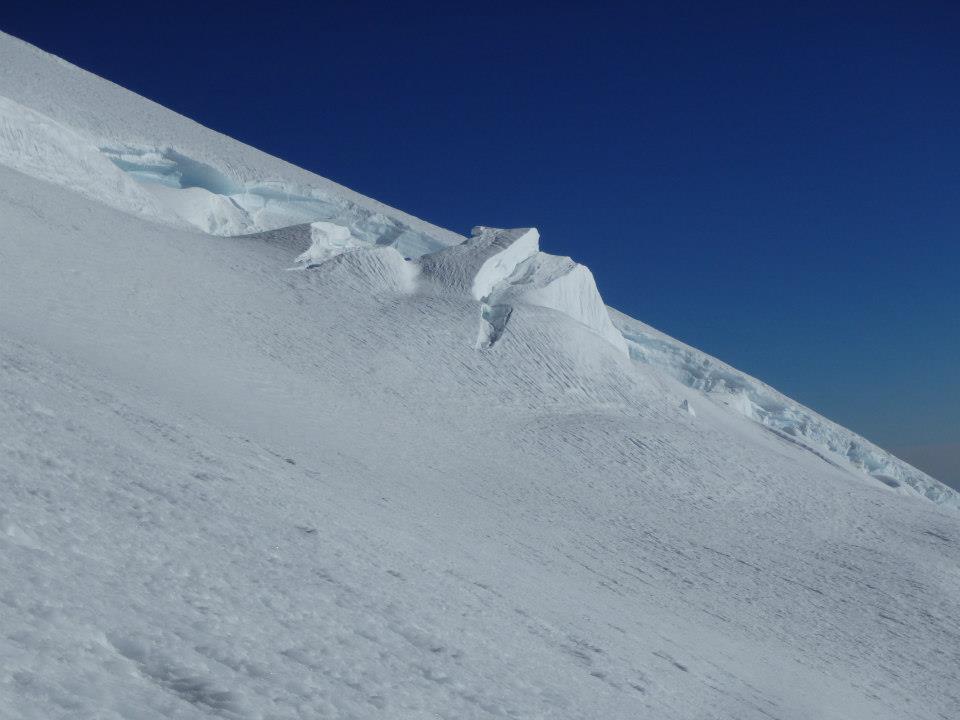
The upper ice fall just getting started in 2014 on Mt Rainier. We skirted around it with ease.
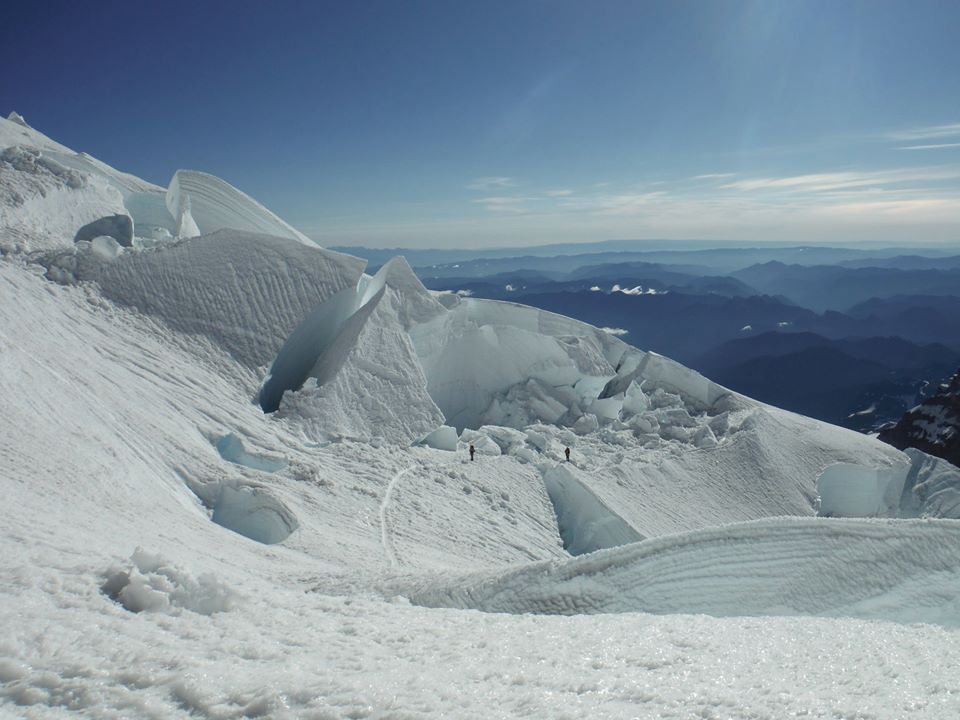
Two climbers in the danger zone on Mt Rainier in 2015 climbing via a riskier boot track.
Back to the route, I told you we took a hard left. Beyond that we slowly stair-stepped our way across and up the mountain. Unlike last year, this year the landscape was rugged, like an ice fall, seracs were tumbled here and there, open crevasses yawned at us, the objective dangers many. We had to weave our way through these towering blocks, some three stories tall. The dangers aren’t obvious. There is no visible motion. The world appears stable. But it’s not frozen in time. The motion happens suddenly once the downward forces exceed the upward resistance, but you ever know when. It can happen at 11:20 PM or it can happen when a person is climbing under it.
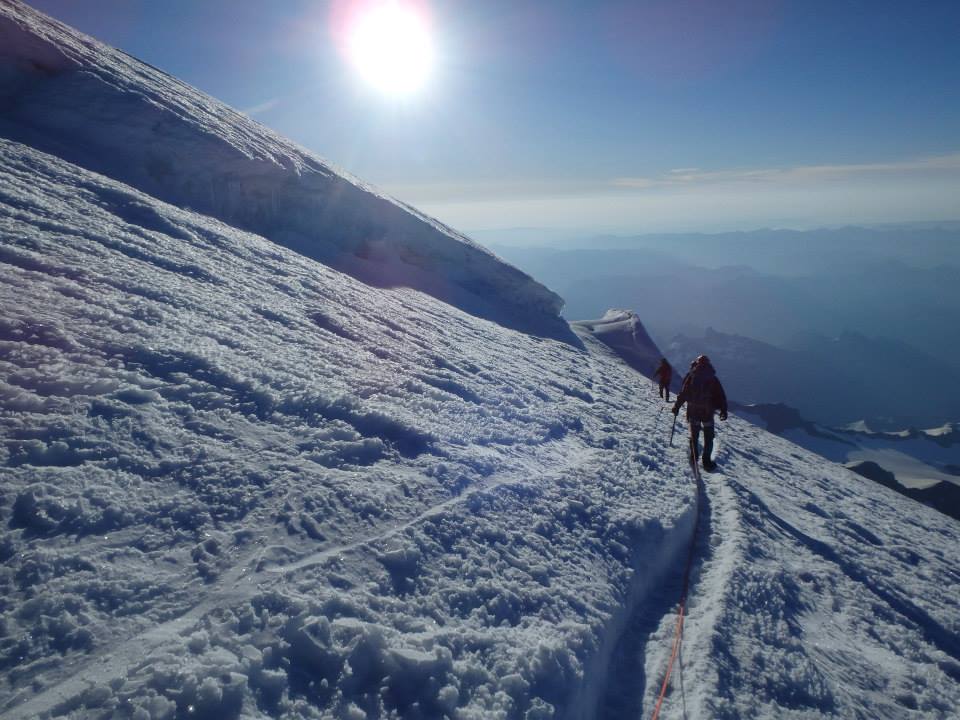
In 2014 the upper parts of Mt Rainier were far less dramatic. The change we noted was amazing.
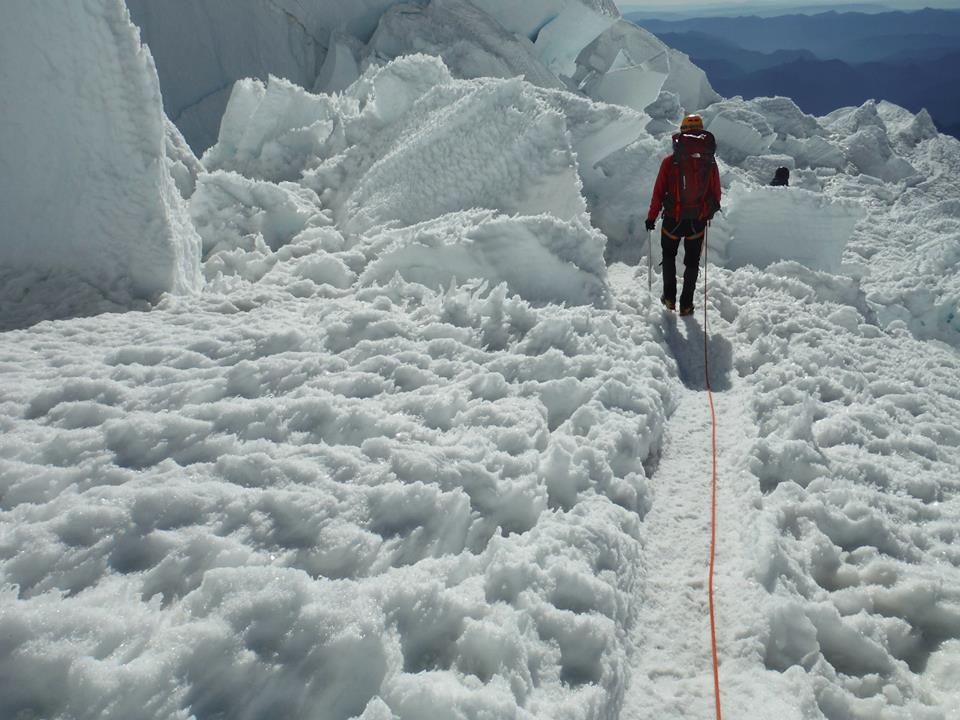
We weave and wind our way through 2015’s jumble on Mt Rainier. Now a very dangerous area.
There are ways to minimize these dangers such as traveling in the wee hours of the morning when it’s coldest (and binding ice hardest), but this isn’t a technical article. This article is about being aware of the changes that occur, the motion in progress, the awe of comparing one year to the last, and a nod to the power of nature and the unseen forces at work on the planet on which we live.
-Mike Cherim, NEM Guide

 We are proud to work with the Department of Agriculture, the White Mountain National Forest and the Androscoggin Ranger District where we are authorized outfitter guides.
We are proud to work with the Department of Agriculture, the White Mountain National Forest and the Androscoggin Ranger District where we are authorized outfitter guides.
